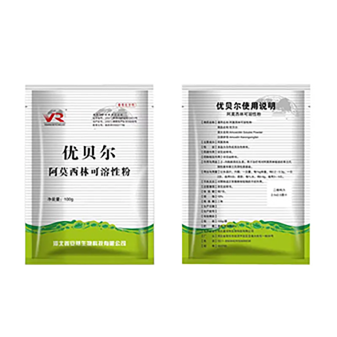- Afrikaans
- Albanian
- Amharic
- Arabic
- Armenian
- Azerbaijani
- Basque
- Belarusian
- Bengali
- Bosnian
- Bulgarian
- Catalan
- Cebuano
- Corsican
- Croatian
- Czech
- Danish
- Dutch
- English
- Esperanto
- Estonian
- Finnish
- French
- Frisian
- Galician
- Georgian
- German
- Greek
- Gujarati
- Haitian Creole
- hausa
- hawaiian
- Hebrew
- Hindi
- Miao
- Hungarian
- Icelandic
- igbo
- Indonesian
- irish
- Italian
- Japanese
- Javanese
- Kannada
- kazakh
- Khmer
- Rwandese
- Korean
- Kurdish
- Kyrgyz
- Lao
- Latin
- Latvian
- Lithuanian
- Luxembourgish
- Macedonian
- Malgashi
- Malay
- Malayalam
- Maltese
- Maori
- Marathi
- Mongolian
- Myanmar
- Nepali
- Norwegian
- Norwegian
- Occitan
- Pashto
- Persian
- Polish
- Portuguese
- Punjabi
- Romanian
- Russian
- Samoan
- Scottish Gaelic
- Serbian
- Sesotho
- Shona
- Sindhi
- Sinhala
- Slovak
- Slovenian
- Somali
- Spanish
- Sundanese
- Swahili
- Swedish
- Tagalog
- Tajik
- Tamil
- Tatar
- Telugu
- Thai
- Turkish
- Turkmen
- Ukrainian
- Urdu
- Uighur
- Uzbek
- Vietnamese
- Welsh
- Bantu
- Yiddish
- Yoruba
- Zulu
Dec . 19, 2024 18:25 Back to list
Oxytetracycline 5% Injection for Effective Bacterial Infection Treatment and Management
Oxytetracycline 5% Injection An Overview
Oxytetracycline is a broad-spectrum antibiotic belonging to the tetracycline class of antibiotics. It is widely used in both human and veterinary medicine for its efficacy against a variety of bacterial infections. The formulation of oxytetracycline as a 5% injection provides a convenient route of administration, particularly in clinical settings where rapid therapeutic effects are required. This article provides an overview of oxytetracycline 5% injection, including its uses, mechanism of action, administration, side effects, and precautions.
Uses of Oxytetracycline 5% Injection
Oxytetracycline is particularly effective against a range of gram-positive and gram-negative bacteria. It is commonly used to treat infections caused by susceptible organisms, including respiratory tract infections, urinary tract infections, skin infections, and certain types of gastrointestinal infections. In veterinary medicine, it is often employed to manage infections in livestock, poultry, and pets, helping to prevent and treat diseases such as pneumonia, leptospirosis, and other bacterial conditions.
Mechanism of Action
The primary mechanism of action of oxytetracycline involves the inhibition of bacterial protein synthesis. It achieves this by binding to the 30S ribosomal subunit, obstructing the attachment of aminoacyl-tRNA to the mRNA-ribosome complex. This action interferes with the growth and reproduction of bacteria, leading to their eventual death. Because oxytetracycline targets the bacterial ribosome, it is effective against a wide range of pathogens, including those that may develop resistance to other antibiotics.
Administration
oxytetracycline 5 injection

Oxytetracycline 5% injection can be administered intramuscularly or intravenously, depending on the specific clinical situation and patient requirements. The dosage and frequency of administration are determined by factors such as the type and severity of the infection, the age and weight of the patient, and renal function. In general, it is essential to follow established guidelines or manufacturer recommendations when administering this medication to ensure optimal therapeutic outcomes.
Side Effects
While oxytetracycline is generally well tolerated, it is not without potential side effects. Common side effects include gastrointestinal disturbances, such as nausea, vomiting, and diarrhea. Additionally, some patients may experience hypersensitivity reactions, leading to rashes or allergic responses. One significant concern with the long-term use of oxytetracycline is its potential to cause photosensitivity, which increases the risk of sunburn. In veterinary applications, acute renal failure has been reported in some animals receiving high doses or prolonged treatment.
Precautions
Prior to administering oxytetracycline 5% injection, healthcare providers should assess the patient's medical history, including any previous hypersensitivity to tetracyclines or related antibiotics. Special caution should be taken in patients with liver or kidney insufficiency, as these conditions may prolong the drug's half-life and increase the risk of toxicity. Pregnant or breastfeeding women should avoid using oxytetracycline unless absolutely necessary, as it can cross the placenta and affect fetal development.
Conclusion
Oxytetracycline 5% injection is a versatile and effective antibiotic used in various medical contexts. Its ability to combat a broad range of bacterial infections makes it a valuable tool in both human and veterinary medicine. However, like all medications, it must be used judiciously, with careful attention paid to potential side effects and patient-specific factors. By adhering to established guidelines for its use, healthcare providers can optimize treatment outcomes and contribute to the overall effectiveness of antibiotics in managing infectious diseases.
-
Guide to Oxytetracycline Injection
NewsMar.27,2025
-
Guide to Colistin Sulphate
NewsMar.27,2025
-
Gentamicin Sulfate: Uses, Price, And Key Information
NewsMar.27,2025
-
Enrofloxacin Injection: Uses, Price, And Supplier Information
NewsMar.27,2025
-
Dexamethasone Sodium Phosphate Injection: Uses, Price, And Key Information
NewsMar.27,2025
-
Albendazole Tablet: Uses, Dosage, Cost, And Key Information
NewsMar.27,2025













